With all of the time spent at home, many individuals have caught the home barista bug. Coffee has a way of hooking you in with its endless intricacies and complexities that result in a seemingly simple cup of fuel. You can make a home coffee bar as simple or as intricate as you would like.
So, you’ve figured out the bare basics, and now what? Well, in the words of Ciara, it’s time to “level up” your home barista game.
Luckily for you, it is actually quite simple. Being a mobile espresso bar owner, I’ve found a few simple additions that make a big difference.
These easy ways to level up your home Barista game should get you on the right track!
Simplest Fix? Quality Ingredients
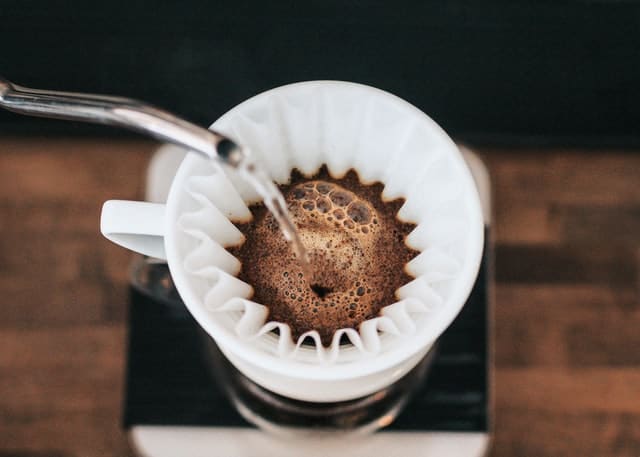
Always use filtered water.
Coffee is made up of two key ingredients – water and coffee beans. It is essential both are good quality. Using filtered water and good coffee beans will do wonders for how your morning brew tastes!
Find good coffee beans.
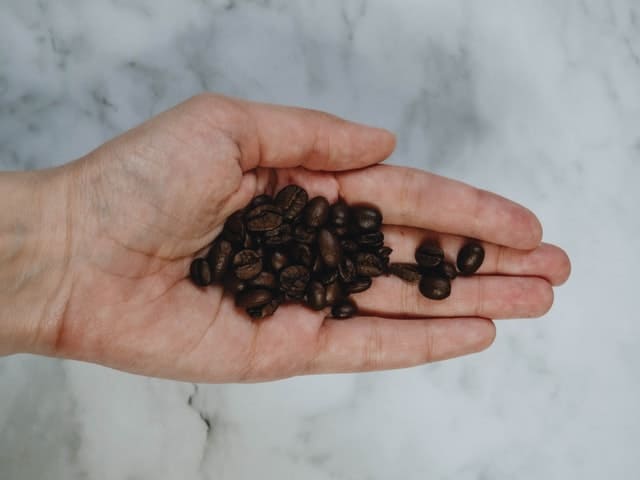
Determine a roast that you like that is also compatible with what brewing method you plan on using. Brewing drip coffee is pretty versatile – you can use any of these, really; it just depends on what you like.
Light roasts are best brewed using the pour-over method because the slower brewing method allows more time for the fruity and floral notes to be extracted. Medium, medium-dark, and dark roasts are more versatile in brewing methods.
Since they do not require as much time for flavor extraction, they are often used for espresso, French Press, Moka pot, Aeropress, and more. Single-origin roasts are all grown in the same area, usually have a more unique or sophisticated taste.
A “blend” comes from multiple areas, usually has a more mellow taste that tends to be more of a crowd-pleaser.
If you’d like to explore coffee blends and how to make your own, check out our article, How To Mix Different Types Of Beans To Create Your Own Blend.
Understand Different Roasts and their Preferred Brew Methods
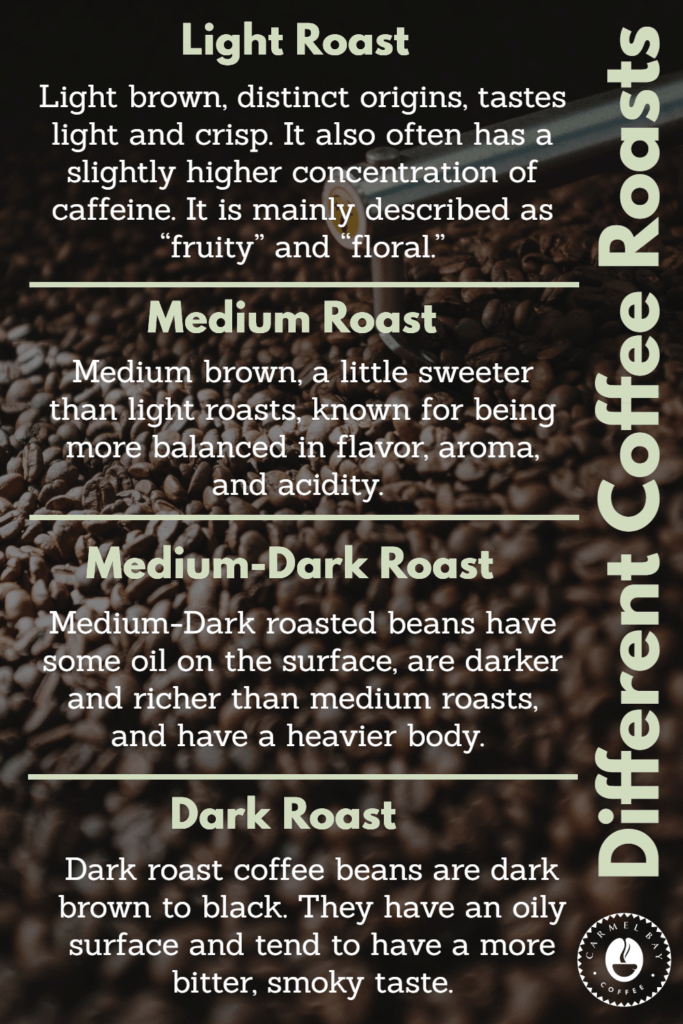
Light Roast
- Light brown, distinct origins, tastes light and crisp. It also often has a slightly higher concentration of caffeine. It is mainly described as “fruity” and “floral.”
- Preferred Brew Method: Pour-over – the slower brewing methods give enough time to extract the tastes of the coffee.
Medium Roast
- Medium brown, a little sweeter than light roasts, known for being more balanced in flavor, aroma, and acidity. It is often referred to as the American roast because it tends to be the most popular in America.
- Preferred Brew Method: Cold Brew – but overall flexible.
Medium-Dark Roast
- Medium-Dark roasted beans have some oil on the surface, are darker and richer than medium roasts, and have a heavier body.
- Preferred Brew Method: Espresso, French Press.
Dark Roast
- Dark roast coffee beans are dark brown to black. They have an oily surface and tend to have a more bitter, smoky taste.
- Preferred Brew Method: Aeropress, Moka Pot, Espresso, French Press.
Clean and Descale Your Equipment
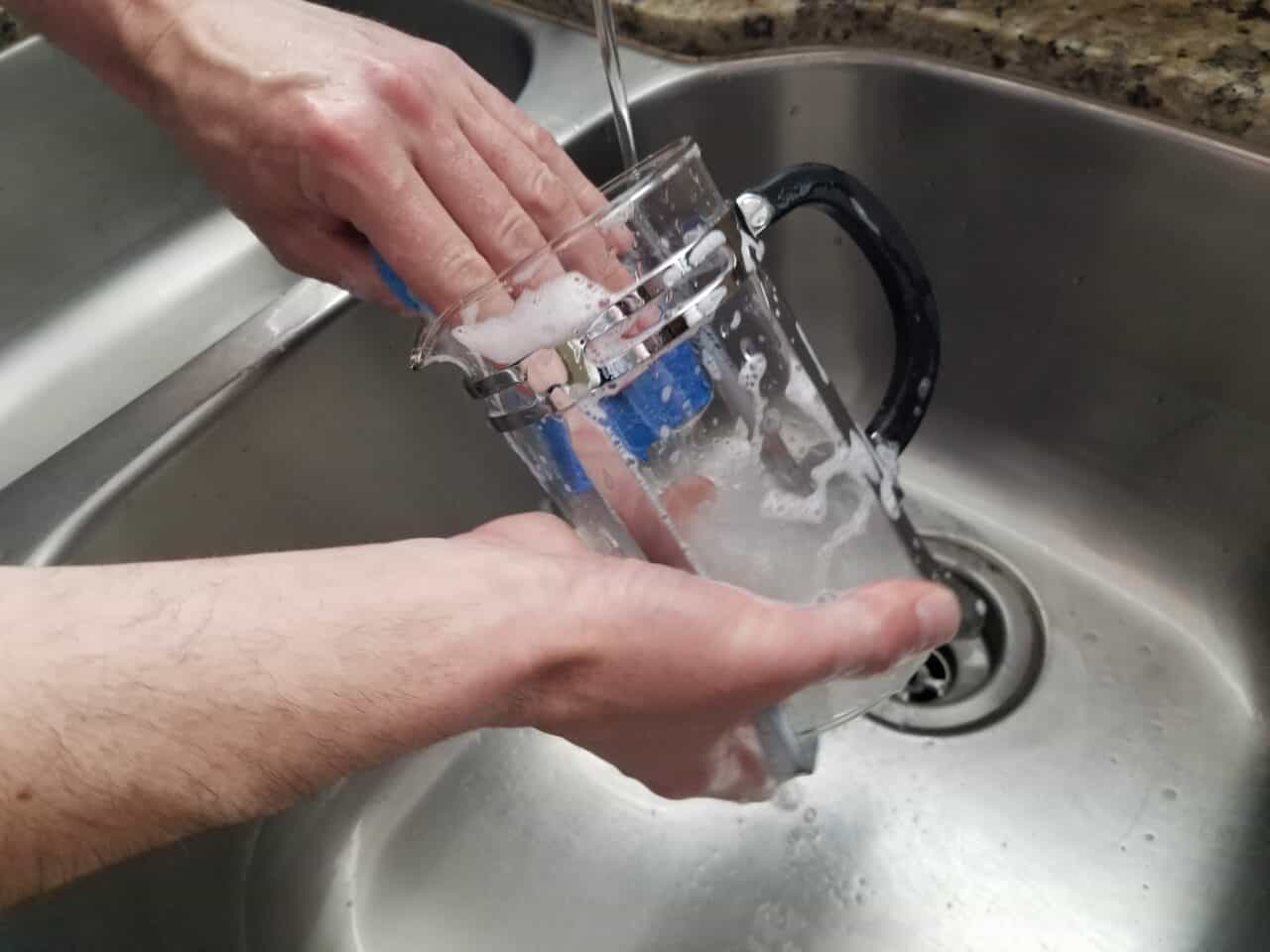
Descale a coffee machine or espresso machine at least every three months.
It is important to descale your coffee machine because the minerals in the water that passes through the coffee machine eventually accumulate on the heating element.
This buildup can impact your coffee by reducing the ability for the water to reach optimal brewing temperature and clogging water flow, and making the machine stop working.
This can be done by either purchasing a descaling solution online or using equal parts of vinegar and water. It is straightforward to descale your coffee machine, so do not skip this.
Clean your coffee grinder once a week or as needed.
It is essential to clean out your coffee grinder because the build-up of fine grounds within the grinder will result in your coffee tasting sour. Nobody has time for that. This can be done by purchasing a coffee grinder cleaner online, such as Grindz or Cafetto, and using as instructed.
Some methods use white rice and other items you may have at home. These are both for more frequent cleaning of the coffee grinder, though a deep cleaning of the grinder is beneficial to do every so often.
Cleaning a coffee machine is simple but if you’re looking for a step-by-step guide, Molly Maid put together an article about coffee machine maintenance.
Do you need a descaler? This is the descaler that I use.
Speaking of Coffee Grinders – You Need One
A good coffee grinder is the foundation for the brew that you are seeking to achieve. Note: A good coffee grinder is the foundation for the brew that you are seeking to achieve.
You are leveling up your home barista game, not running a full-blown coffee shop!
If you want to spend hundreds to thousands of dollars on a grinder, you have plenty of options. For the home, it is vital to consider just a couple of things.
There are two types of grinders: blade and burr. Blade grinders are often cheaper but not very consistent and therefore are a bit more inconsistent in making quality coffee drinks. They are also known for being messier. Burr grinders can be broken down into either conical burr grinders or flat plate burr grinders.
Both kinds of burr grinders crush the coffee beans in uniform sizes and produce high-quality, consistent ground coffee worthy of commercial or home brewing methods.
Depending on your budget, you can make either blade or burr grinders work. At this point, conical burr grinders tend to be a fan favorite.
The Coffee Folk (thecoffeefolk) has some interesting ideals about coffee grinds if you’d like to dig a little deeper.
Do you want to know how often to grind your coffee beans? We have an article dedicated to just that, This Is How Often To Grind Coffee Beans?
Carmel Bay Coffee Pro Tip: When grinding, first make sure to check what grind your brewing method requires fine grind, medium grind, or coarse grind.
You don’t need an Espresso Machine (though they are fantastic to have)
Here are Alternative Brewing Methods.
French press
A French Press is one of the easiest additions to your home brewing offering you can add. This is usually a good starting point if you’re looking to level up.
A French press requires coarse grind, hot-but-not-boiling water, timing for 4 minutes, and pressing the plunger down slowly to exert pressure. The result is an excellent cup of coffee. Many people also bring these with them when camping.
A French press is fantastic and I know you’ll love it too. You can find the one I recommended here.
Cold Brew
This is another simple addition, though it does take time. Several potential modifications are depending on how fancy you want to get with cold brew brewing equipment.
On a high level, you grind the coffee beans to a coarse grind, steep for 12-24 hours, strain, and transfer to a clean jar. Note: This makes Cold Brew concentrate, which is then diluted to anywhere from 1:2 to 1:4 cold brew concentrate-to-water ratio to make a cold brew drink.
If you’re interested in cold or iced coffee, we have a great article about it, This is The Best to Make Iced Coffee at Home.
OXO makes a great cold brew coffee maker that you can find here.
Pour-over or Chemex
This is a more hands-on approach to brewing coffee. You can find pour-over or Chemex equipment online and in several stores. The basic process is you grind the coffee, then heat the water in a kettle.
You want to pour it slowly, starting in the center and then circling out. In addition, a scale would be beneficial to have to weigh out coffee. It can seem more overwhelming or complex than it actually is, so don’t let it intimidate you!
Moka Pot
This is made on a stovetop and can be a good substitute for espresso.
An everyday use is also using the brewed coffee to make a Cuban Coffee (basically an espresso shot with brown sugar).
Cuban Coffee: You add coffee in the top part, fill the water to the line in the bottom part, and combine and put them on the stove. You’ll start seeing the coffee come out of the top – at this point, close the lid, turn off the heat, remove from the heat source with hot pads, and wrap the bottom with a cold towel.
The result is a small amount of very concentrated coffee. Combine with water or use as espresso substitute (typically 2 oz is a good base).
This is the Moka pot I use in the gif above from Bialetti.
Aeropress
I absolutely love my Aeropress! This is another solid espresso substitute or way to make strong coffee. Generally, it uses grounds, hot water, and pressure exerted pushing the water through by you to create a potent beverage.
If you enjoy a French Press coffee you’ll also like the Aeropress. A plus an Aeropress has over a French Press is the ease of clean up. It’s kind of fun to dispose of the coffee puck by pushing the Aeropress down quickly, ( I know it’s silly but if you’ve done it you know what I mean).
Aeropress makes a few different sizes and even a small one for camping. Check out the one I use above here.
Accessories to Add to Your Home Coffee Bar
Milk Frother
A milk frother aerates the milk to make foam for espresso-based lattés and cappuccinos or drinks such as a matcha latté.
There is an alternate way that you can use until you get a real milk frother. This is with a French Press.
Warm-up milk on the stove or in the microwave. For about 6oz to 8oz set your microwave for 60 seconds. After the milk is warm, pour it into the french press. Now, move the plunger up and down until the milk starts to froth up. It only takes a few times of going up and down.
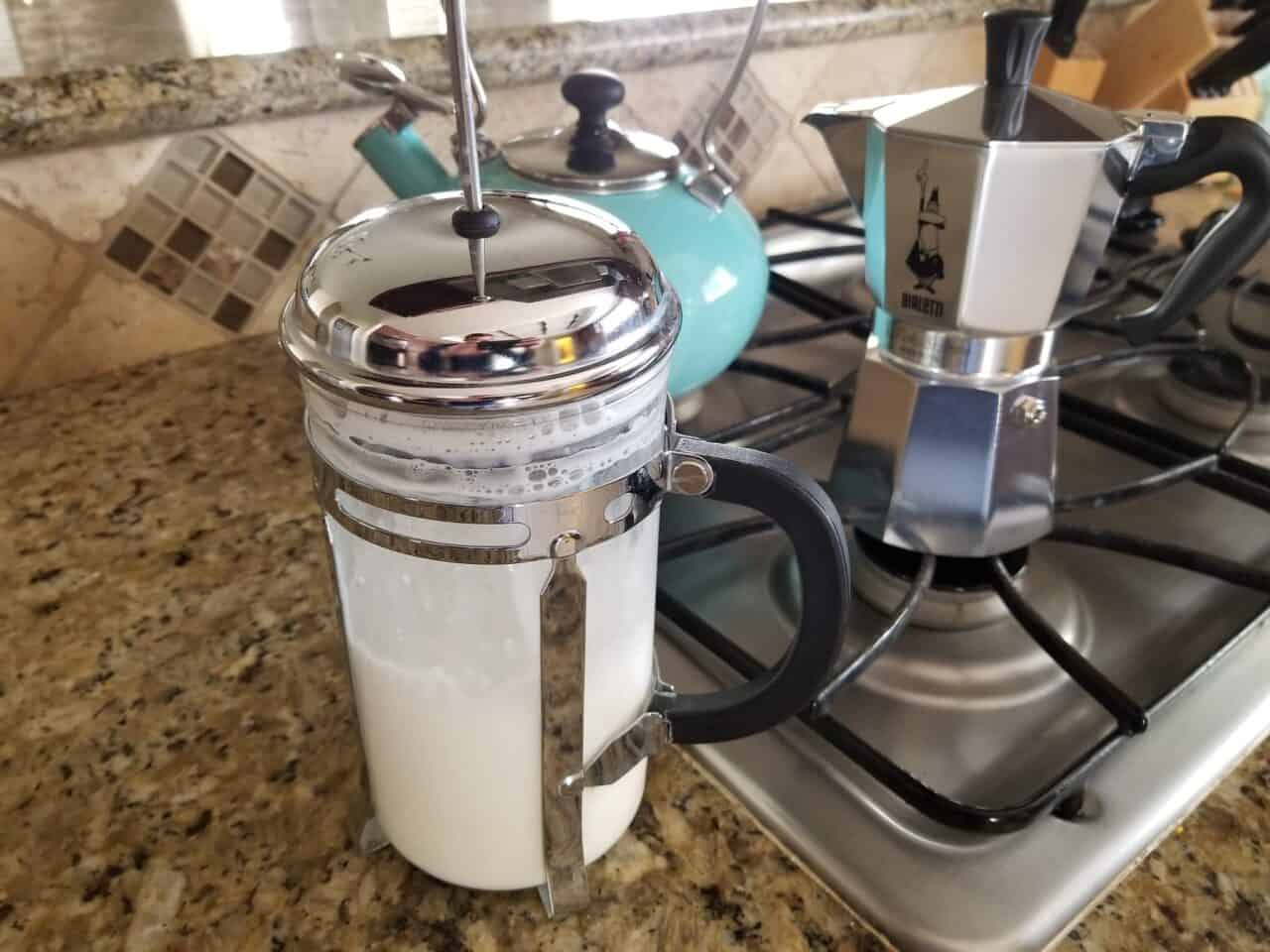
Then there you have it, warm milk and foam for a cappuccino or latte!
Thermometer
Thermometers are essential in measuring the temperature of milk as you are heating it up to make a latté, au lait, cappuccino, or more. A thermometer can also be used to make sure milk is staying cold enough.
Syrups and Sauces
Syrups and Sauces elevate your beverages to add different quality flavors. Research how many pumps per size of a drink, or just experiment with how you like your beverage.
If you don’t like your drinks as sweet, start with one pump. If you like it, normal-sweet, 2-3 pumps should suffice. Extra sweet would require extra pumps.
Popular choices are Ghirardelli sauces: chocolate (for mochas), white chocolate, and caramel. For syrups, Monin is a popular brand. Others include, but are not limited to, Torani, Barista Twenty-Two, and more.
A quick search will give you quite a few results.
Carmel Bay Coffee Pro Tip: I’ve found the chocolate, white chocolate, and caramel are best as sauces (thicker) and stirred in, while the vanilla, hazelnut, lavender, and more are best as simple syrups. You can even make your own syrups at home!
Milk Substitutes
A fun way to explore different flavors. Generally, whole milk is the best for espresso-based drinks because it is full, creamy, and the fat makes it easier to froth (hello, latté art).
Oat milk and soy milk are two other substitutes that tend to be on the creamier side and are dairy-free options. Almond milk is also another option. If you’re looking for a low-calorie add-in, almond milk is probably your best bet.
Try Matcha Lattés, Chai Lattés, London Fog, and more!

There are so many options to choose from. Leveling up your home barista game does not have to be solely espresso or coffee.
Try your hand at a Matcha Latté or Chai Latté (recommend researching Matcha and/or Chai powder brands before purchasing). Make a London Fog, which is an Earl Grey Latté with vanilla syrup; some even add lavender syrup as well. The sky is the limit.
Replace 5 minutes/day of scrolling social media to learn about coffee
Leveling up your home barista game is best done by learning more about coffee. Coffee is a space where you don’t know what you don’t know. The more you learn, the more you realize you have so much left to learn. It’s incredible! So, spend a few minutes watching a YouTube clip, learning how to make a new drink, researching how regions affect the taste of the coffee, or even making latté art.
Carmel Bay Coffee Pro Tip: Screenshot or save items in a “coffee” folder on your phone for easy reference as you are brewing coffee at home. Examples of items I’ve saved include images of different grind types, what brewing method goes with each grind type, recipes for coffee beverages, specific coffee blends or single-origins that I would like to try, and more.
Wrapping Up
Use filtered water, good coffee beans, purchase a grinder, clean your equipment as needed, and add to your brewing-methods repertoire. Espresso machines are incredible but also can be incredibly expensive.
These additional brewing methods are worth your while and are heavily used in specialty coffee shops today. Also, there are extremely budget-friendly options and equipment options that are as upscale as you desire them to be.
Create your own drinks, copy recipes you find online, buy syrups and sauces, or make your own! You are the boss of your home coffee bar. Enjoy it!



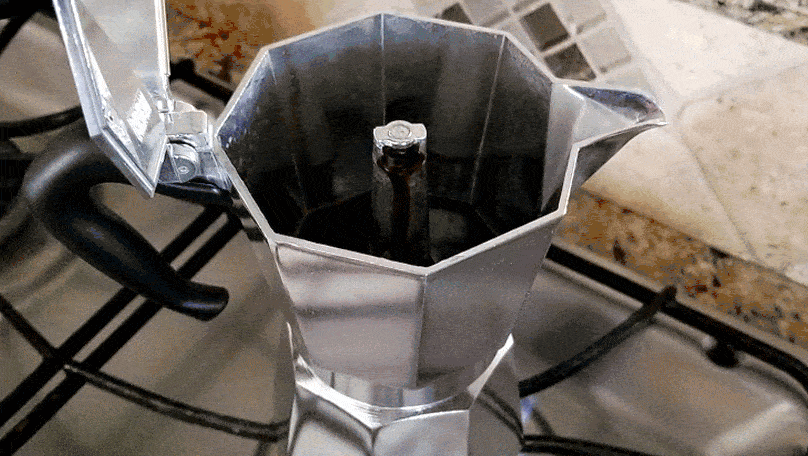
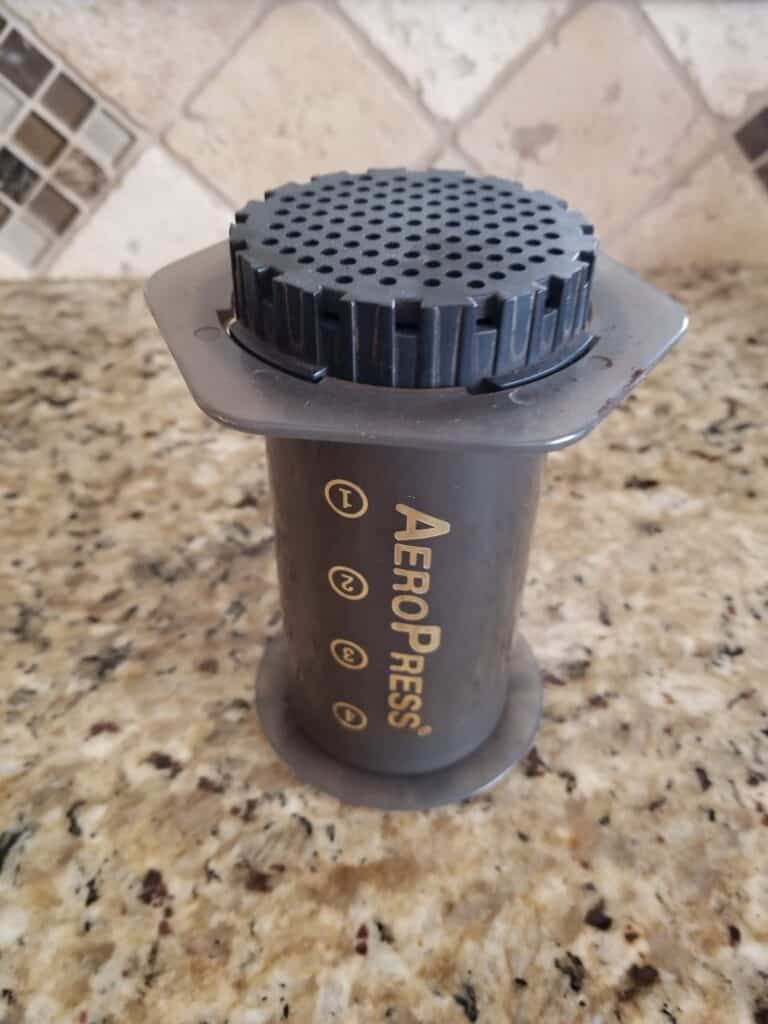

Its my first time to visit your site and the detailed Information is so Comprehensive I’ll have to return many times to digest it.
One Question…
I use a Cliver Dripper for convenience, would a Burr Grinder add to the taste using this method or would it be a waste of money.
Thanks,
Declan.
Hi Declan, I think so. You’d have more control over your grind size to dial in the taste you’re looking for. Burr grinders are priced right, and the one I have seems built-proof, so I say go for it 🙂